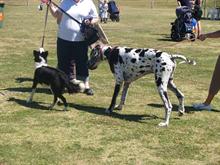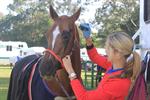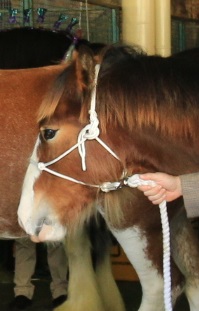Explore Animal Psychology

Study animal behaviour and learn how to better manage animals in a variety of settings. This course provides an excellent foundation for working with animals in any situation: farms, zoos, veterinary practices, pet shops or even in the wild. The course is developed and tutored by academics and practitioners from a background in agriculture, veterinary science and wildlife management.
Course Duration: 100 hours
Course Structure
There are eight lessons in this course:
- Introduction: Influences and motivation
- What is behaviour
- Causes of behaviour (e.g. genetics, learning, external and internal influences)
- Reactive, active and cognitive behaviour
- Conditioning
- Genetics and Behaviour
- Understanding biology
- Natural selection
- Genetic variation
- Development of behaviour
- Behavioural genetics
- Animal Perception and Behaviour
- How animals perceive things
- What stimulates them and how do those stimuli function
- Instinct
- Neural control
- Sensory processes, sight, sound, hearing etc.
- Behaviour and the Environment
- Coordination
- Orientation
- Homeostasis
- Acclimatisation
- Biological clocks
- Reproductive cycles etc.
- Social Behaviour
- Animal Societies
- Aggression
- Social constraints
- Social order
- Play
- Biological clocks
- Communication
- Instinct and Learning
- Conditioning and learning
- Extinction and habituation
- Instrumental learning
- Reinforcement
- Operant behaviour
- Biological and cognitive aspects of learning
- Handling Animals
- Psychological affects of different handling techniques
- Training animals (horses, cats, dogs, etc).
- The student has a choice of which types of animals to focus on, though a variety will still be covered.
- Behavioural Problems
- Abnormal behaviour (e.g. Psychotic, neurotic);
- Domestication of animals
- Reducing human contact
- Reducing human dependence
Enrol Today
Ready to get started? Click on the orange enrol now button.
Have questions? Click here to email our course counsellors.
Why Learn About Animal Behaviour?

Most animals can be trained and their behaviour managed provided that they have not been traumatised through bad experiences with humans or other animals, they do not have an illness which could be restricting their ability to cooperate and learn, and they are not too old to learn. The saying 'you can't teach an old dog new tricks' is not without substance. Older animals which have not been socialised with humans can be notoriously difficult to train./p>
Training animals involves assessing the animal itself, the owner, and the environment. Each of these factors interact and so must be considered when establishing a successful training programme. If you only consider the animal, you may overlook your own faulty methods or obstacles in the animal's living environment which are inhibiting progress.
Why do we need to manage animal behaviour at all?
A simple answer is for the safety of both humans and animals. Many of us are willing to have a dog in our home, but we would not be willing to have a wild dog, or wolf, in our homes. Humans have domesticated dogs so that they are more likely to behave in ways we consider to be appropriate. Dogs may harm humans at times, but they are usually trusted within our family homes to protect us and warn us of invaders.
Any animal which lives with us must have some degree of control over its behaviour which makes it compatible with humans, which rules out – a fierce dog, a pecking bird, or a scratching cat. People only want animals which are not threatening within the home environment. They also prefer animals that are clean and toilet-trained, which are not going to defecate around the house causing hygiene problems and potential illness. Therefore, humans have learned to train animals to behave in ways that their owners consider to be appropriate.
The training of animals is not just related to pets. Animals may be trained to perform specific tasks — such as the use of carrier pigeons to carry messages, dogs to help the visually impaired, to sniff out drugs or landmines, and s on. Various behaviour modification techniques may be used to help train these animals to perform these tasks.
We also train animals in captivity. Whilst we may wish animals in zoos and wildlife parks to have as natural a life as possible, we also need to ensure that some training occurs, such as the animals learning where to go for food, how to approach the food area, how to respond to wardens, and so forth. Farm animals need to be taught to accept herding, to approach food troughs, to become accustomed to stalls, to pass through disinfectant dips, and other behaviours.

As such, animal training is not just for the safety of humans and animals, but also for hygiene, health, efficiency, and the general care and well being of animals.